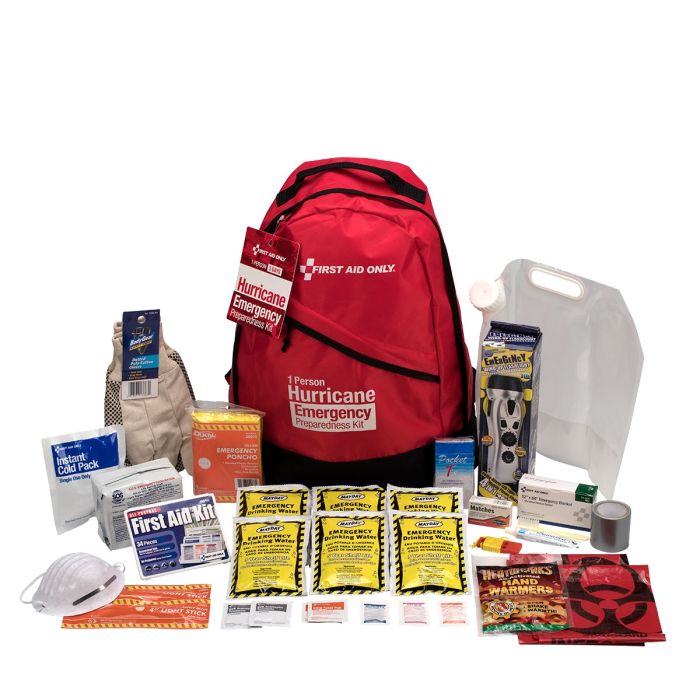Encourage Yourself with Emergency Preparedness: Prepare, Be Durable
How to Create a Comprehensive Emergency Situation Preparedness Strategy
In the world of preparedness, developing a detailed emergency situation strategy is not merely a job to inspect off a listing; it is a vital cornerstone of any kind of company or individual's resilience approach. By meticulously crafting a plan that attends to numerous elements of emergency situation monitoring, consisting of threat analysis, interaction methods, resource appropriation, and calculated decision-making, one can lay a solid foundation for safeguarding operations, lives, and properties.
Significance of Emergency Preparedness
Emergency readiness is crucial for mitigating possible threats and making certain the security of individuals and areas. In today's globe, where natural catastrophes, public health situations, and various other emergency situations can strike without caution, being prepared can make a significant distinction in lessening the influence of these events. By having a well-thought-out emergency situation readiness strategy in position, organizations and individuals can react properly, protect lives, and minimize residential or commercial property damage.
One of the main reasons emergency situation readiness is essential is its function in saving lives. When emergencies happen, having a strategy that lays out clear treatments for communication, evacuation, and emergency response can help individuals act promptly and emphatically. This can stop injuries and casualties by making sure that people know what steps to require to remain safe
Moreover, emergency situation preparedness enhances the durability of areas. By cultivating a culture of preparedness and planning for different circumstances, communities can bounce back quicker from disruptions and disasters. This durability is necessary for keeping security, continuity of operations, and overall well-being when faced with adversity.
Assessing Potential Risks
Thinking about the importance of being gotten ready for unforeseen events, the preliminary step in establishing a reliable emergency situation readiness strategy includes completely examining and analyzing possible threats. This analysis needs a detailed evaluation of all feasible risks that might affect the organization, taking into consideration factors such as location, sector, and historic data on events. By determining these risks, organizations can prioritize their readiness initiatives and designate resources efficiently to mitigate the most significant hazards.
Typical dangers that organizations might deal with consist of natural calamities like quakes, cyclones, or floods, technological threats such as power blackouts or data violations, in addition to human-caused threats like accidents or deliberate acts of violence. Performing a danger assessment likewise involves taking into consideration the prospective impact of these occasions on the organization's procedures, employees, clients, and reputation. By performing a complete risk evaluation, companies can establish customized emergency action plans that address their details vulnerabilities and make certain effective readiness for any kind of potential dilemma.
Developing a Communication Plan
Developing a clear and thorough interaction strategy is vital for reliable emergency preparedness within companies. In times of crisis, communication plays an essential duty in guaranteeing the security and well-being of workers, stakeholders, and the neighborhood. A well-thought-out interaction strategy need to describe clear lines of communication, assign vital employees in charge of communication tasks, and establish procedures for sharing details promptly and accurately.
One key aspect of producing an interaction plan is determining key and alternative interaction channels (EMERGENCY PREPAREDNESS). These can consist of e-mail, message messaging, phone trees, social networks systems, and public address systems. It is crucial to guarantee that these channels are reputable, easily accessible, and regularly tested to assure their performance throughout emergency situations

Building an Emergency Situation Set
Given the crucial value of readiness in times of situation, a key component that organizations should attend to is the establishment of an emergency set. An emergency situation set acts as an important source that can help reduce the impact of unforeseen events, guaranteeing that necessary products and devices are conveniently offered when needed most. When putting together an emergency kit, it is important to think about the particular requirements and situations of the organization. Basic items such as water, non-perishable food, emergency treatment materials, flashlights, batteries, and a battery-powered radio are fundamental components of any kind of emergency situation set. Furthermore, organizations should consist of vital papers, such as get in touch with lists, insurance details, and emergency situation reaction plans, in water-proof containers within the package. On a regular basis reviewing and upgrading the components of the emergency set is vital to guarantee that supplies are useful and present. By proactively maintaining an emergency and constructing kit, companies can enhance their readiness to successfully reply to crises and guard their possessions and employees.
Establishing Evacuation Treatments
To ensure the security and orderly discharge of workers during emergencies, companies have to establish clear and reliable discharge treatments. Evacuation procedures ought to include a variety of possible circumstances, including fires, natural disasters, or other emergency situations that call for speedy evacuation.

Furthermore, companies should develop a system for accounting for all personnel during a discharge to ensure that everybody has actually securely left the premises. Communication plays a crucial duty in evacuation procedures, with clear directions on just how to leave and when to do so. Regular review and updating of emptying treatments based upon responses and transforming circumstances are vital to preserving the performance of the strategy.
Verdict
To conclude, creating a comprehensive emergency preparedness strategy is critical for ensuring the safety and well-being of individuals in the event of a disaster (EMERGENCY PREPAREDNESS). By assessing potential risks, developing an interaction strategy, constructing an emergency situation set, and establishing emptying treatments, individuals and organizations can be better geared up to respond effectively to emergencies. It is important to focus on preparedness efforts to minimize the influence of catastrophes and safeguard lives and residential or commercial property
In the realm of readiness, establishing an extensive emergency strategy is not merely a job to inspect off a list; it is an essential keystone of any type of organization or person's resilience approach. When emergencies occur, having a strategy that describes clear treatments for emergency situation, discharge, and communication action can help individuals act quickly and decisively. navigate to this website. By performing a comprehensive risk assessment, companies can develop customized emergency situation response plans that address their particular vulnerabilities and make sure reliable readiness for any kind of possible situation
Creating a extensive and clear communication strategy is crucial for effective emergency preparedness within organizations. By assessing potential risks, creating a communication plan, constructing an emergency situation package, and developing emptying organizations, treatments and individuals can be much better equipped to react successfully to emergencies.